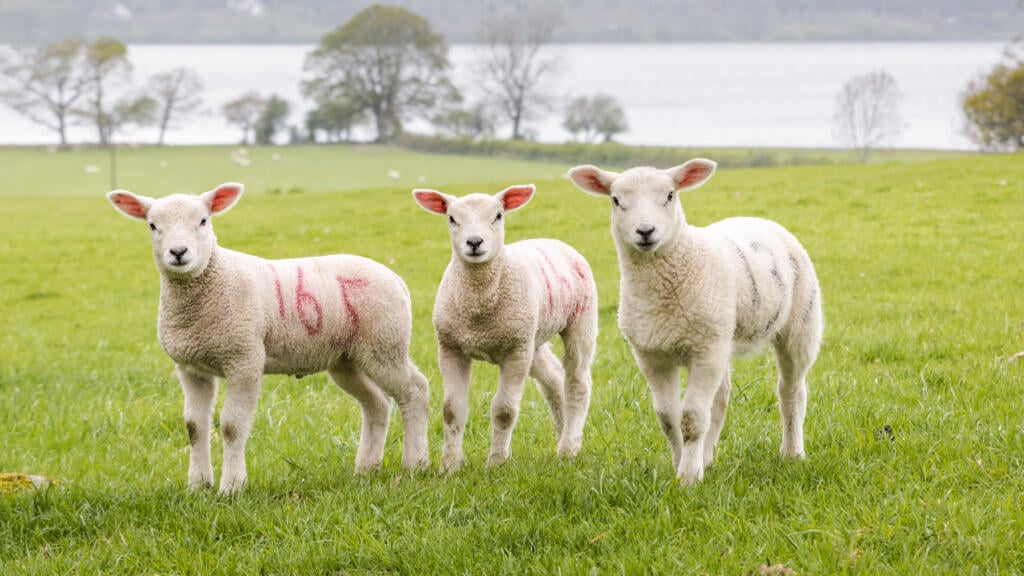
Our 10 best spring walks for wildflowers and views
Phillipa Cherryson
If you’ve found yourself heartened by a bright display of daffodils, you’re not alone. Our Fitness and Wellbeing Editor explores the uplifting effect of these beautiful spring flowers.
Despite the world’s best efforts to dampen my spirits – including waking up with a throbbing headache, a mad dash to get ready, and getting rained on as I took my son to nursery – there was one thing that made me smile this morning: a simple bunch of daffodils.
They were presented to me earlier this week by one of my oldest friends, as a ‘thank you’ for putting her up for the night, and so I was predisposed for them to bring me joy. Gazing upon their tall green stems and proud yellow trumpets took me back to the night when said friend and I enjoyed a long-overdue catch up in my local pub over a delicious meal and a delightful bottle of the house red.
Despite the world’s best efforts to dampen my spirits – including waking up with a throbbing headache, a mad dash to get ready, and getting rained on as I took my son to nursery – there was one thing that made me smile this morning: a simple bunch of daffodils.
They were presented to me earlier this week by one of my oldest friends, as a ‘thank you’ for putting her up for the night, and so I was predisposed for them to bring me joy. Gazing upon their tall green stems and proud yellow trumpets took me back to the night when said friend and I enjoyed a long-overdue catch up in my local pub over a delicious meal and a delightful bottle of the house red.
 Credit: Shutterstock / servickuz
Credit: Shutterstock / servickuzI’m not alone in feeling the mental wellbeing benefits of daffodils, however. A quick survey of friends and family via WhatsApp confirmed that it is a flower with the power to bring much joy.
‘Happy’, ‘hopeful’ and ‘optimistic’ were amongst the overwhelmingly positive words that came back in very enthusiastic replies. I’m sure you’ll also have a word that springs to mind when you think of or see some daffodils.
And see them you will! We are deep into daffodil season (which typically runs from February through to May), and I am finding them everywhere: waiting to be bought in buckets outside my local greengrocer; swaying in the breeze on the banks of the pond in my local park; brightening up the windowsills of my neighbours’ homes.
READ: 5 ways to help daffodils in a vase last longer
As I sat and smiled at this beautiful bunch from my dear friend, I got to reflecting on exactly why the humble daff evokes such strong, positive feelings.
The power of the daffodil is something that one of our best-loved poets, William Wordsworth, knew only too well. ‘A poet could not but be gay’ he writes about seeing a ‘host of golden daffodils’ in one of his most famed poems, I Wandered Lonely as a Cloud. He goes on to articulate the mood-altering effect of the sighting:
I gazed – and gazed – but little thought
What wealth the show to me had brought:
For oft, when on my couch I lie
In vacant or in pensive mood,
They flash upon that inward eye
Which is the bliss of solitude;
And then my heart with pleasure fills,
And dances with the daffodils.
What Wordsworth is writing about here is the power of visualisation – the practice of using positive imagery to help overcome negative thoughts or experiences. This is a technique often used by mental health professionals, especially those treating conditions such as post-traumatic stress disorder – but it can be a powerful tool for anyone suffering from negative thoughts.
 Credit: Shutterstock / PhilMacDPhoto
Credit: Shutterstock / PhilMacDPhoto“Imagery techniques are often used in cognitive psychotherapy to help patients modify disturbing mental images and overcome negative emotions,” says Dr Svetla Velikova, part of a group of researchers in Norway who studied ‘self-guided positive imagery training’.
Their research results confirmed that the practice had a “beneficial effect on the emotional state” of the participants. They concluded that self-guided imagery training may be useful as a part of self-development programmes to improve emotional wellbeing – and could be a cost-effective method in the treatment of subthreshold (mild) depression.
With this in mind, I will certainly remember to recall the beauty of the posy my friend gifted me when negative thoughts next darken my door.
Although there are white and cream varieties, most daffodils come in various shades of vibrant yellow, from pale lemon to a deep, glorious gold. This could play a big part in why they bring so much joy.
Whilst reactions to yellow differ from person to person, it is generally a colour that is associated with feelings of happiness, warmth and energy (in no small part due to it being the colour that we perceive the sun).
Indeed, a bright yellow shade called ‘Illuminating’ was one of two hues chosen as Pantone’s Colour of the Year in 2021. Speaking at the time, Pantone Colour Institute’s executive director, Leatrice Eiseman, said: “Yellow is thought of as joyful, outgoing, open, and friendly.
“Psychologically, yellow is the strongest colour. It is associated with comedy, a happy mood and playfulness. Yellow ribbons have been used as a sign of hope and optimism since the 19th century.”
 Credit: Exceptional
Credit: ExceptionalEiseman’s ‘sign of hope’ comment is significant. As one of the first flowers to bloom after the long, dark winter, daffodils are typically viewed as a symbol of renewal and rebirth.
In this vein, daffodils have strong links with the Christian festival of Easter. One variety, Narcissus pseudonarcissus ‘Lobularis’, is called the ‘Lent lily’ due to it typically flowering between Ash Wednesday and Easter Sunday – the ultimate celebration of new life, hope and new beginnings. Indeed, as a child I remember every member of my church’s congregation being presented with a mini-bunch of daffs at the end of the Easter Sunday service.
This theme was confirmed to me by another friend, who told me: “When I see them it feels like better days are coming.” Amen.
According to researchers at the University of Copenhagen, there’s evidence to suggest that the humble daffodil could even be used to help people suffering with conditions such as anxiety and depression.
READ: Why daffodils and spring onions should never mix
As per their research findings, the brain is wrapped in a ‘blood barrier’, which prevents certain compounds – including those used in some anti-depressant and anti-anxiety drugs – from penetrating. However, the researchers discovered that a specific compound found in South African daffodils can bypass this barrier – and could therefore potentially be used to ‘smuggle’ drugs aimed at improving brain health through, such as those for depression and anxiety.
Whilst further investigation on this is needed (and it should be stressed that some varieties are poisonous, and should never be consumed), it’s clear to see that daffodils have many positive benefits. So why not treat yourself or a loved one to a beautiful bunch this weekend?
If you do, I’d love for you to tag @SagaExceptional in a picture on Facebook, Instagram or Twitter.

Written by Stephanie Wood she/her
Published: Updated:
Stephanie Wood has been a digital journalist for 16 years and has worked for a raft of respected titles. As former Digital Editor of Fit&Well and Woman&Home (shortlisted for PPA Digital Brand of the Year under her editorship), she has extensive fitness and wellness experience, and a keen understanding of what’s important to the over-50s audience.
Stephanie is a keen sportswoman, and will gladly accept an invitation to play most games. She particularly loves netball, which she plays once a week. She is a qualified England Netball Level 2 coach, and has worked with adults and children in this capacity. She is also taking tennis lessons to improve her game (and, more importantly, finally beat her sister), and recently discovered the joys of padel tennis too.
Outside of sports, Stephanie works out weekly with her personal trainer, Em Newson at Ground Studio, whose areas of specialism include movement in menopause – a topic she feels passionately about. She’s also a fan of wild swimming, and has taken a refreshing dip everywhere from Ullswater to the Isle of Wight.
Stephanie lives in North London with her partner Keith and their son, Woody. When family life allows, she likes to indulge in her hobbies, including stained glass work and batch-cooking healthy, family-friendly dishes.

Phillipa Cherryson

Julie Penfold

Joy Archer

Becca Caddy